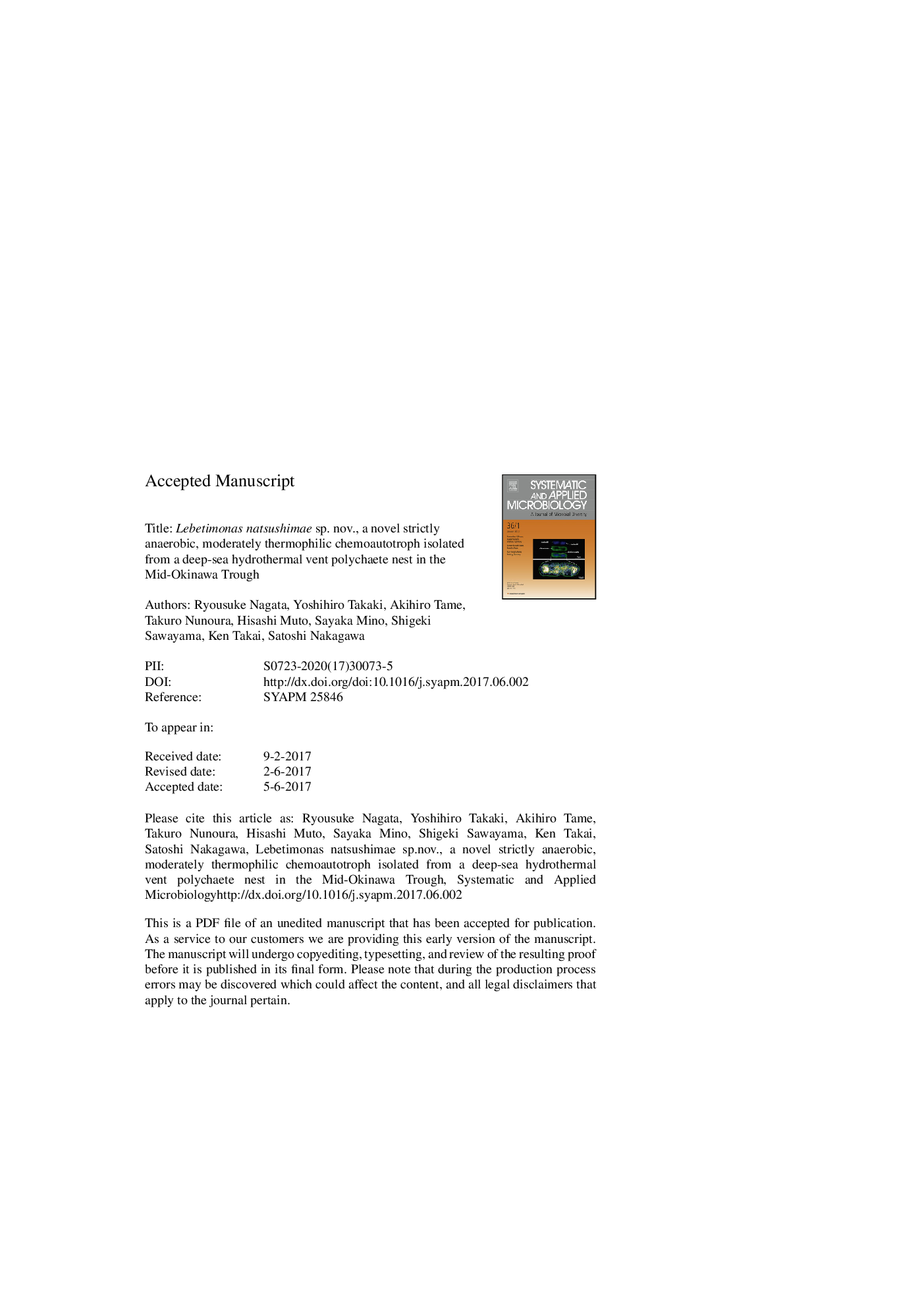| Article ID | Journal | Published Year | Pages | File Type |
|---|---|---|---|---|
| 8393629 | Systematic and Applied Microbiology | 2017 | 22 Pages |
Abstract
A moderately thermophilic, strictly anaerobic, chemoautotrophic bacterium, designated strain HS1857T, was isolated from a deep-sea hydrothermal vent at the Noho site in the Mid-Okinawa Trough. Strain HS1857T grew between 35 and 63 °C (optimum 55 °C), in the presence of 10-55 g lâ1 NaCl (optimum 25 g lâ1), and pH 5.5-7.1 (optimum 6.4). Growth occurred with molecular hydrogen as the electron donor and elemental sulfur, nitrate, or selenate as the electron acceptors. Formate could serve as an alternative electron donor with nitrate as an electron acceptor. During growth with nitrate as the electron acceptor, strain HS1857T produced ammonium and formed a biofilm. CO2 was utilized as the sole carbon source. The G + C content of the genomic DNA was 33.2 mol%. Phylogenetic analysis of the 16S rRNA gene sequence indicated that strain HS1857T is a member of the order Nautiliales, showing a sequence similarity of 95.0% with Lebetimonas acidiphila Pd55T. The fatty acid composition was similar to that of L. acidiphila, which was dominated by C18:0 (47.0%) and C18:1 (23.7%). Based on the genomic, chemotaxonomic, phenotypic characteristics, the name Lebetimonas natsushimae sp. nov., is proposed. The type strain is HS1857T (= NBRC 112478T = DSM 104102T).
Related Topics
Life Sciences
Agricultural and Biological Sciences
Ecology, Evolution, Behavior and Systematics
Authors
Ryousuke Nagata, Yoshihiro Takaki, Akihiro Tame, Takuro Nunoura, Hisashi Muto, Sayaka Mino, Shigeki Sawayama, Ken Takai, Satoshi Nakagawa,
